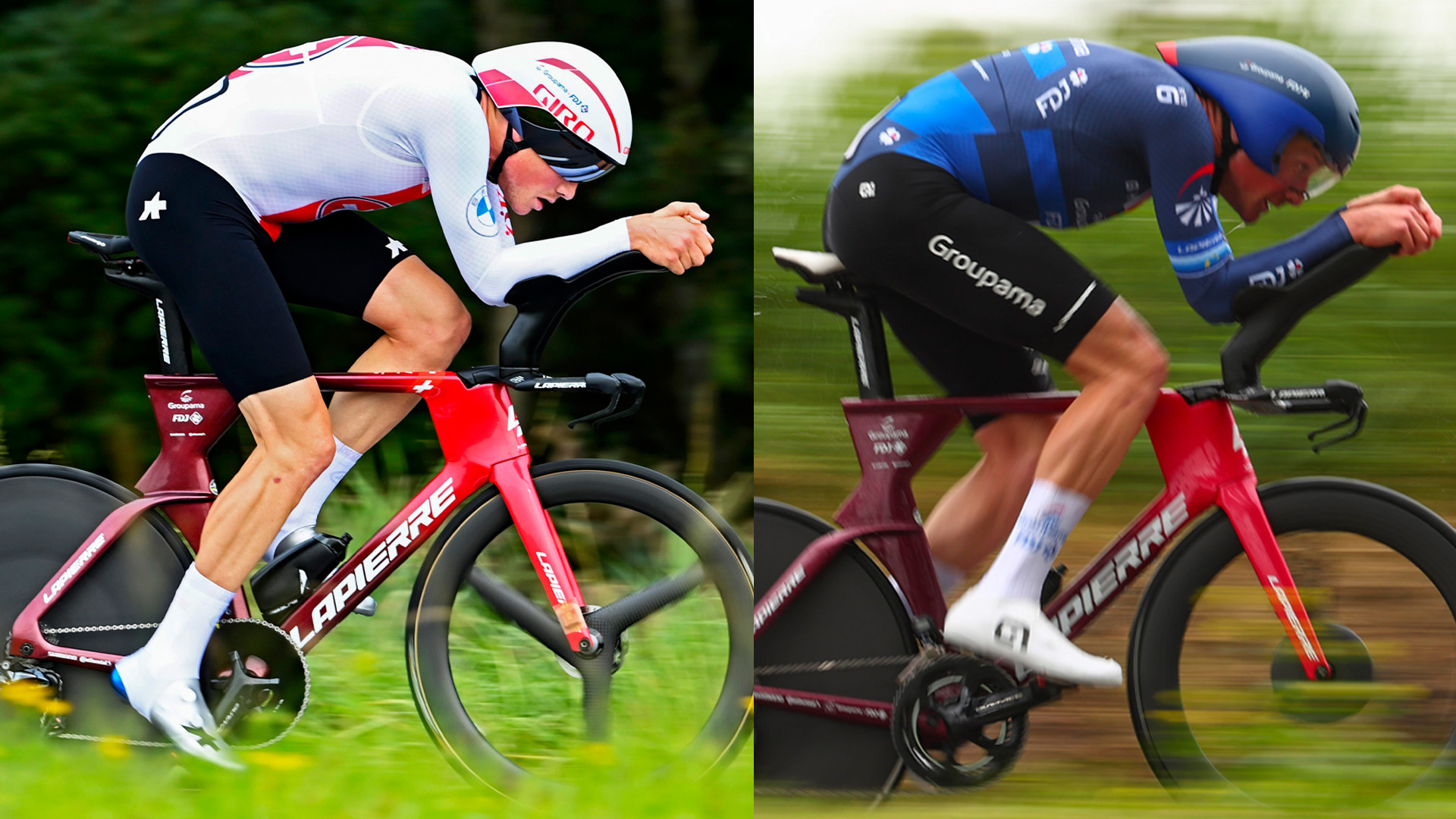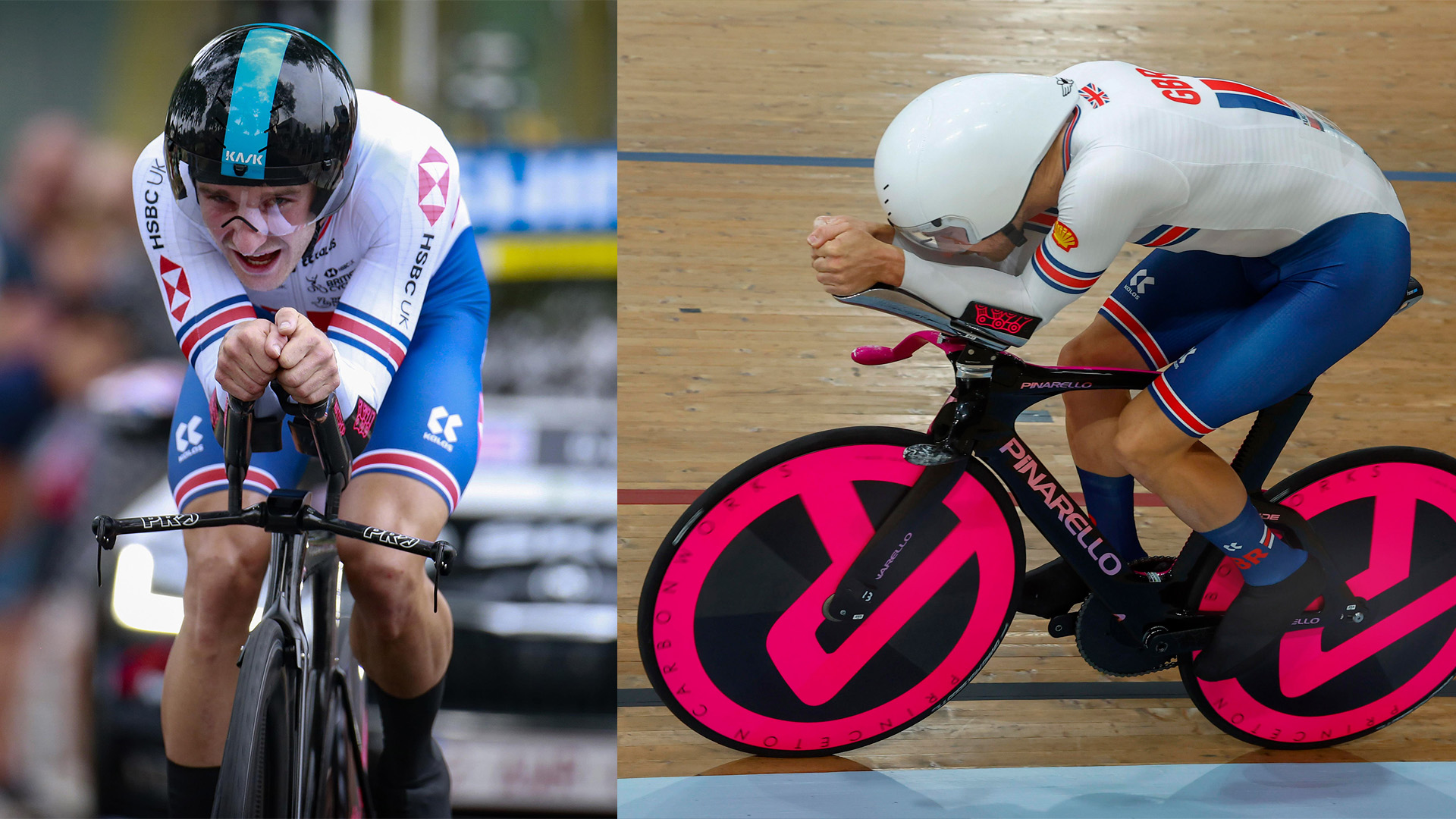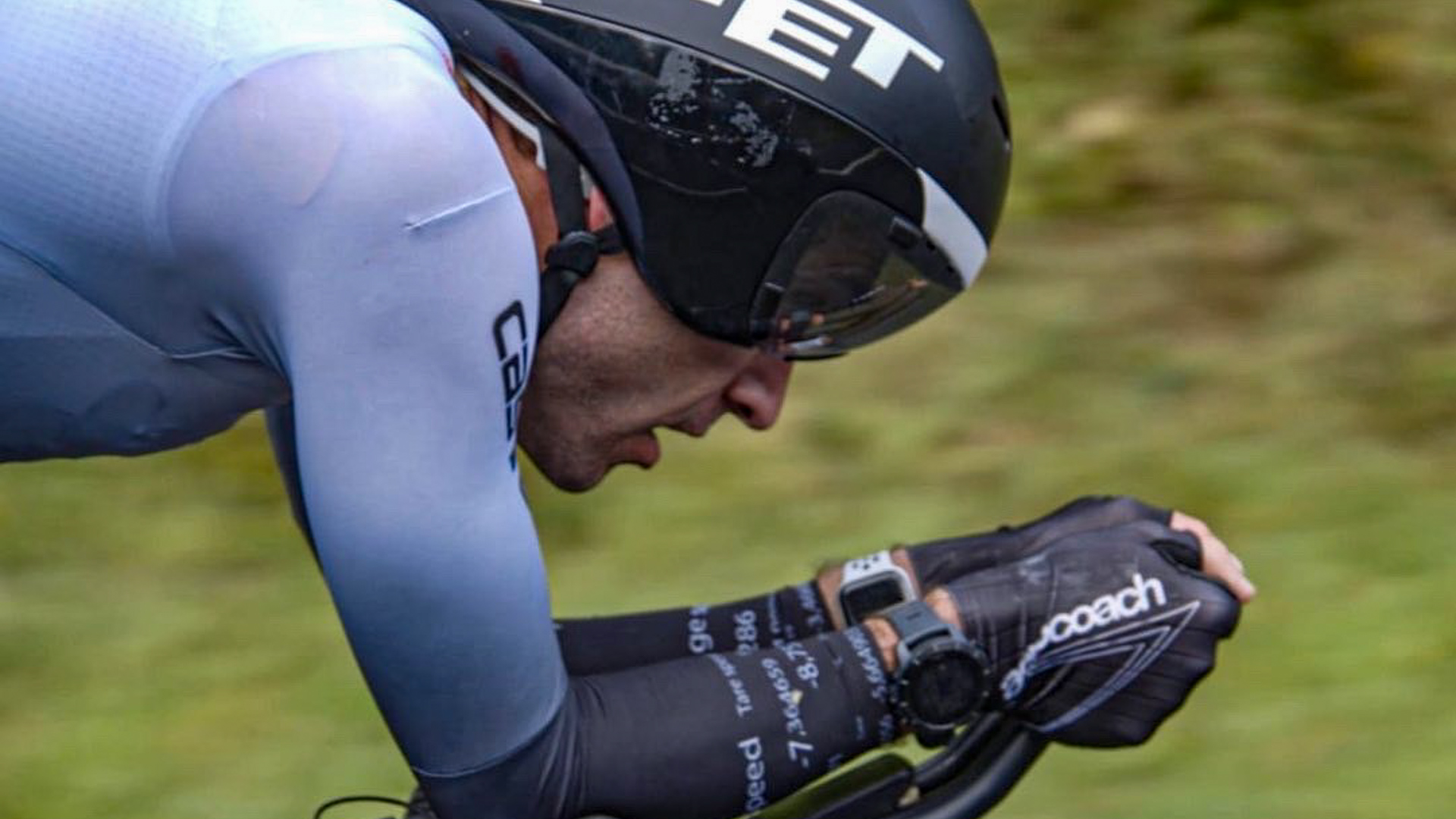Stefan Küng’s crash in the European Time Trial Championships rattled me. Had it not been for helmet standards, and perhaps even the fact he was wearing a visor, the horrific crash could have had much more harrowing consequences. No one ever likes to see a rider crash, but once it became clear Küng was seemingly ok (he was not, in fact, OK, and suffered a concussion as well as hand and skull fractures that were diagnosed only after his finish), this one was a particularly tough watch for me given how all too well I know the head-down, watts-up riding style seemingly to blame for Küng riding into the barriers at speed.
It’s a position I’ve adopted myself, unintentionally and only when suffering for most of my cycling years, but absolutely intentionally in recent times. It’s dangerous, but it’s fast. Typically I only do it in a time trial, approaching the finish line, for short periods, on straight roads I know don’t have a junction leading onto them and after surveying the road ahead. That said, I’ve done it and it’s kind of dumb to ride 50 kph not looking where you are going.
It’s the complex reality of modern time trialling, though. The head-down position is simply faster for almost every rider; it’s physics! Run the tests, buy the new skinsuits, and re-mortgage the house for the latest TT bike, but dipping your head down in line with your torso and closing off your frontal area is, not only free, but one of the most effective aero interventions a rider can make.
One of the most effective aero interventions a rider can make once every other aero box is ticked, that is. The modern time trial positions are getting more extreme by the year, perhaps only eclipsed by the Boardman Superman and Obree egg positions of the mid-90s. As effective as they are, though, utilising these positions and realising the associated aero gains is unquestionably a skill in its own right. A skill inherited, developed, and trained like any other talent. The most gifted riders in this space can contort themselves into half nothing like the human equivalent of a compact umbrella.

You don’t need me to tell you it’s not safe. It’s downright dangerous. Deep down, even the most staunch aero defender can only agree that riding at high speed in a compromised, unbalanced position, with no access to the brakes, is not ideal, never mind adding in the frankly bizarre idea that you might do so without looking where you are going. But there’s a problem: these positions aren’t going away, nor should they.
At first, it was just a select few time-trialling nerds with a high-level aero understanding tinkering and testing to find the optimal positions. It was ridiculed at first, but then, like any new thing that brings success, more riders followed suit. For many knocking on the TT success door, these extreme positions and getting your head down can help reduce the W:CdA delta between yourself and the world’s best. Dipping your head, burying your chin into your forearms, and squeezing your shoulders so tight it feels like you are trying to glue your AC joints to your ears could be (read: probably is) the difference between a podium and obscurity.
Positions are even more extreme on the track, but at least the chances of hitting someone or something else are much lower on the boards. It’s a risk:reward analysis. The risk is reduced on the track so the lengths riders can go to in chasing the rewards are increased.
Physics class on wheels
It all comes down to education and physics. The genie is out of the bottle, and it’s never going back in. The aero gains are there for the taking, and the riders understand the benefits (and the risks). Not adopting the most aero position you can is simply leaving time on the table, and crucially, in a competitive environment, that is more time for your competitors to feed on.
Talk of UCI interventions makes me wince. On the one hand, I can’t argue that everyone would be safer if we are all sitting upright and looking where we are going. But I also, for the life of me, can’t think how a rule could be worded to ban head positions. Or more accurately, I can’t think of a regulation change that could and would be policed and enforced. Do we ban head angles? Do we mandate riders must pass visual field tests in their TT position? What if they just dip their head because they are suffering from the effort?
We could, of course, come up with some new vague tick-box rule, banning head-down riding or mandating riders must see where they are going at all times, but don’t we already have enough ineffective and eventually ignored rules? Hands up if you want another rule only applied to some and in less high-profile scenarios, but ignored when broken by one of the stars of the sport on their way to a victory in a high-profile event.

Furthermore, riders now know that lower heads = faster speeds. By banning one way of adopting said position, riders will likely find another way. Again, how do you ever ban how riders hold their head in relation to their torso? I fear the UCI will be pressured into a positional regulation change simply to be seen to do something. I really fear the bonkers idea that they might ban TT bikes. For those unaware, Google “Road bike time trial record” and you might agree banning time trial bikes won’t have much effect, certainly not in levelling the playing field.
Furthermore, the UCI did change its rules on time trial positions for this season. The catch-all positional regulations previously enforced not only allowed shorter riders to adopt more extreme – and hence usually faster – positions than their taller competitors, but those taller riders were sometimes forced to take bigger risks to make up for the restrictions enforced by the regulations.
Riders now fit into three height categories, and riders in the tallest category, of whom Küng is one, now have the option of increasing their reach to, angle, and height of their TT extensions. In other words, they can get closer to that praying mantis position outlawed by the UCI but widely regarded as offering a better aero position, but also helping with seeing the road ahead.
That said, even a full u-turn from the UCI on the praying mantis position isn’t a fix-all solution. That “high-hands” position is fast and optimal for some, but crucially, it is terrible, aero-wise, for other riders. Simply allowing it won’t ensure everyone suddenly has an optimal aero position and is able to see ahead of them. But, it would help some riders and would be a welcome update to the regulations.

Some experts did voice concerns over the UCI’s new positions. While helping to level the playing field for taller riders, they may be open to exploitation and allow some riders to adopt even more extreme heads-in-forearms positions. I’ve wondered if the new rules could even legalise the return of the so-called Superman position for the flexible (both muscularly and mentally) riders willing to max out the reach, stick on a set of tiny cranks, and whack the saddle all the way back. The point is that aerodynamics are complicated and unique to each rider, but the one constant is: the smaller you make yourself, the faster you are likely to be. The laws of physics will always promote riders adopting the most extreme positions.
Küng has been vocal in his support of the new regulations and is quoted as saying the positions help level the playing field for taller riders competing with shorter riders like Evenepoel. And that’s part of the problem. Regulating so that the rider who knows how to get aero, spends time practising said aero position, and crucially, can actually perform in that position, to make him or her less aero, is like enforcing that sprinters politely ask for space in the final kilometre, or climbers to be less light, or talented and fast descenders to slow down. Again, time trialling, like the sport in general, is inherently dangerous.

As much as it might seem right to clamp down on extreme aero positions, we need also acknowledge this is a legitimate skill many riders have now developed. Contortion acts on a time trial bike at peak heart rate are as much a freakish talent as any traditional cycling skill. Perhaps what is required most here is further education about time-trialling aerodynamics.
All too often riders rely on what we think works instead of what is tested as fastest. Teams and riders need to test, test, test every aspect of their time trial position; only then will it become clear what risks are worth taking and which are not. The best time triallists have every aspect of their setup and position optimised. The aero savings between the “average time trial position” and the Dan Bighams, Remco Evenepoels, etc. of this world are huge but these riders can still, for the most part, see where they are going in their optimised road time trial positions. Ducking the head and cutting off all line of vision in an average position is not a silver bullet making up for all other aero losses.
Furthermore, if we get to the Bigham/Evenepoel levels of optimisation, the additional benefit of dipping our heads so low we can’t see where we are going on open public roads is likely relatively minimal. Take Bigham’s Hour Record and track positions. Yes, they are extreme but his outdoor road position is quite different. Outdoors, his head is up, he has a line of sight. That’s not because of a UCI regulation, it’s a cost-benefit analysis of aero gains versus restricted vision.

Very few of us have genuinely optimised every other aspect of our time trials to the point where the increased risk of not seeing where we are going is the only remaining avenue. The good news is, all those other avenues are likely more lucrative than the blind alley of dropping our heads.
Bike racing, TT bikes and extreme positions are inherently dangerous. The modern aero positions scare the crap out of me, sometimes. That doesn’t mean they are wrong. They are supremely fast, but that also doesn’t mean they are right. Much of what is right or wrong lies in the rider’s own personal responsibility, level, and risk: reward analysis.
For as much as I know heads down is faster, I typically only adopt said position for seconds at a time on roads I know very well. I recognise the gains but also the risks and actually, my risk-reward analysis is swinging back towards the sensible. Might dipping my head make me a second quicker in the finishing straight, yes. Will that make a difference in the results, probably not.
So is there a problem with modern TT positions? Probably. Can it be fixed with new UCI regulations, probably not. Can riders protect themselves? Absolutely.
What did you think of this story?

